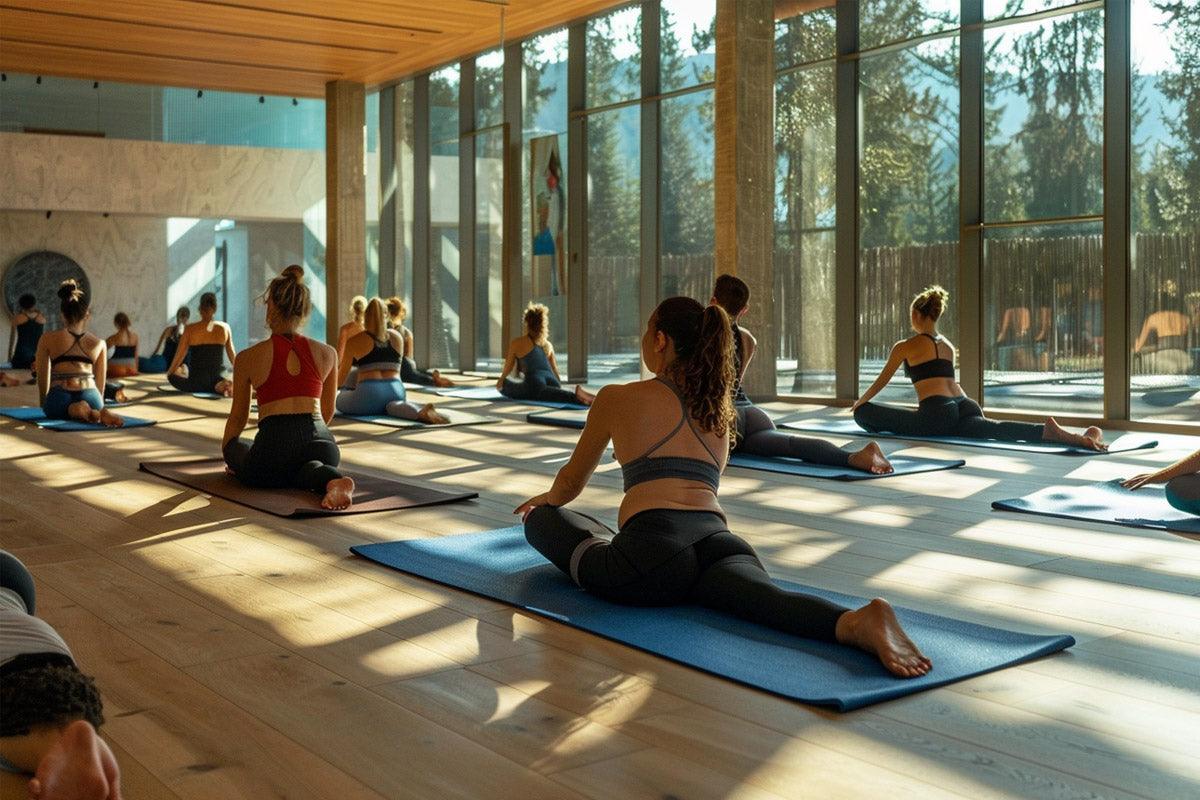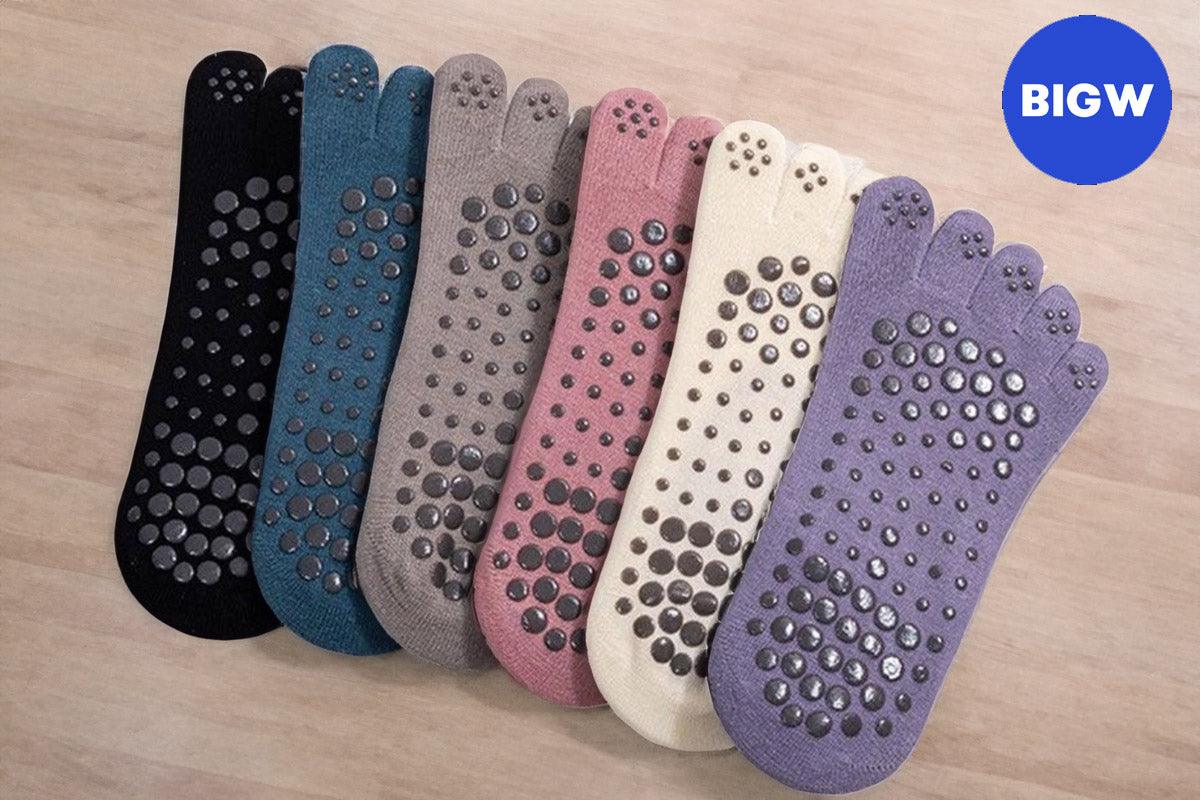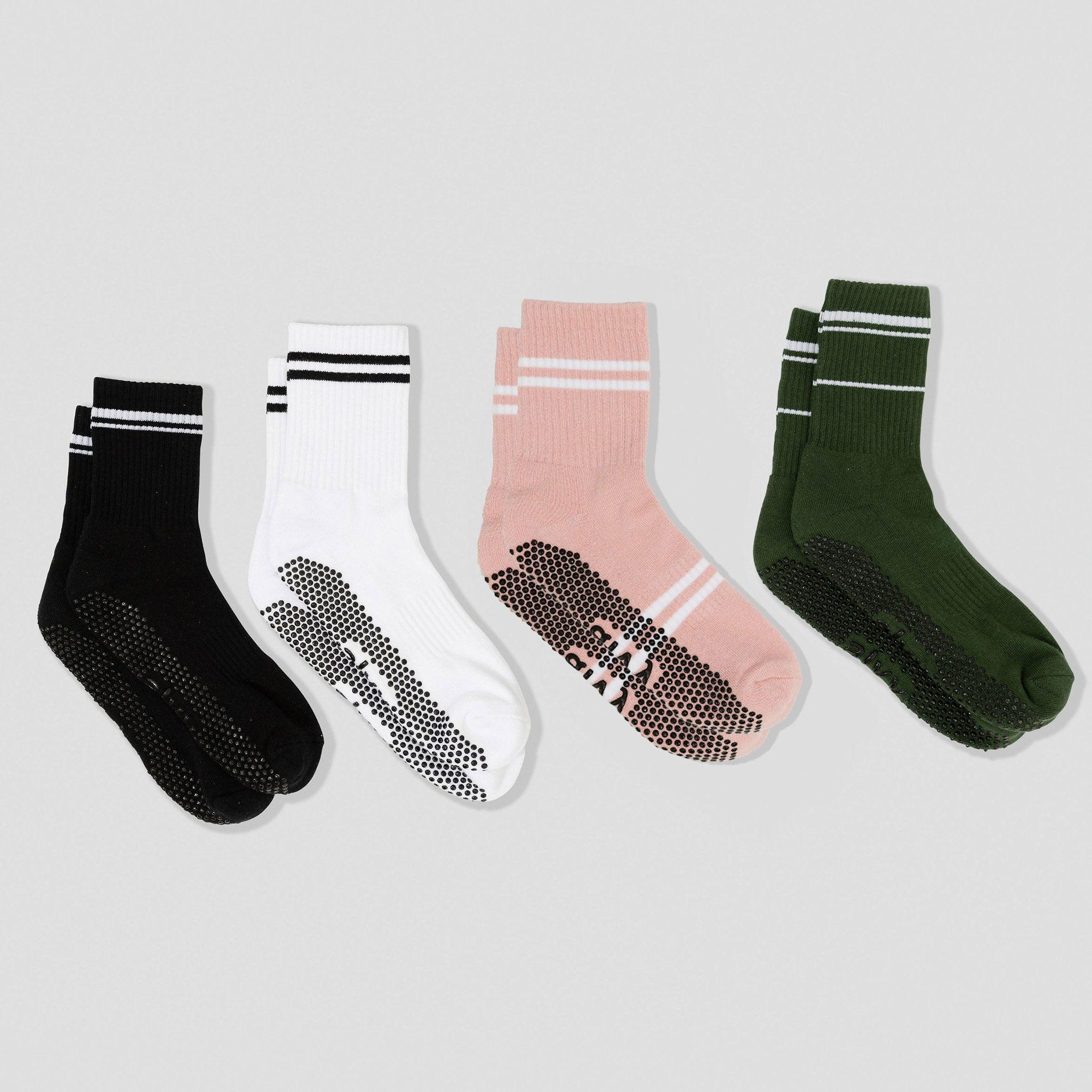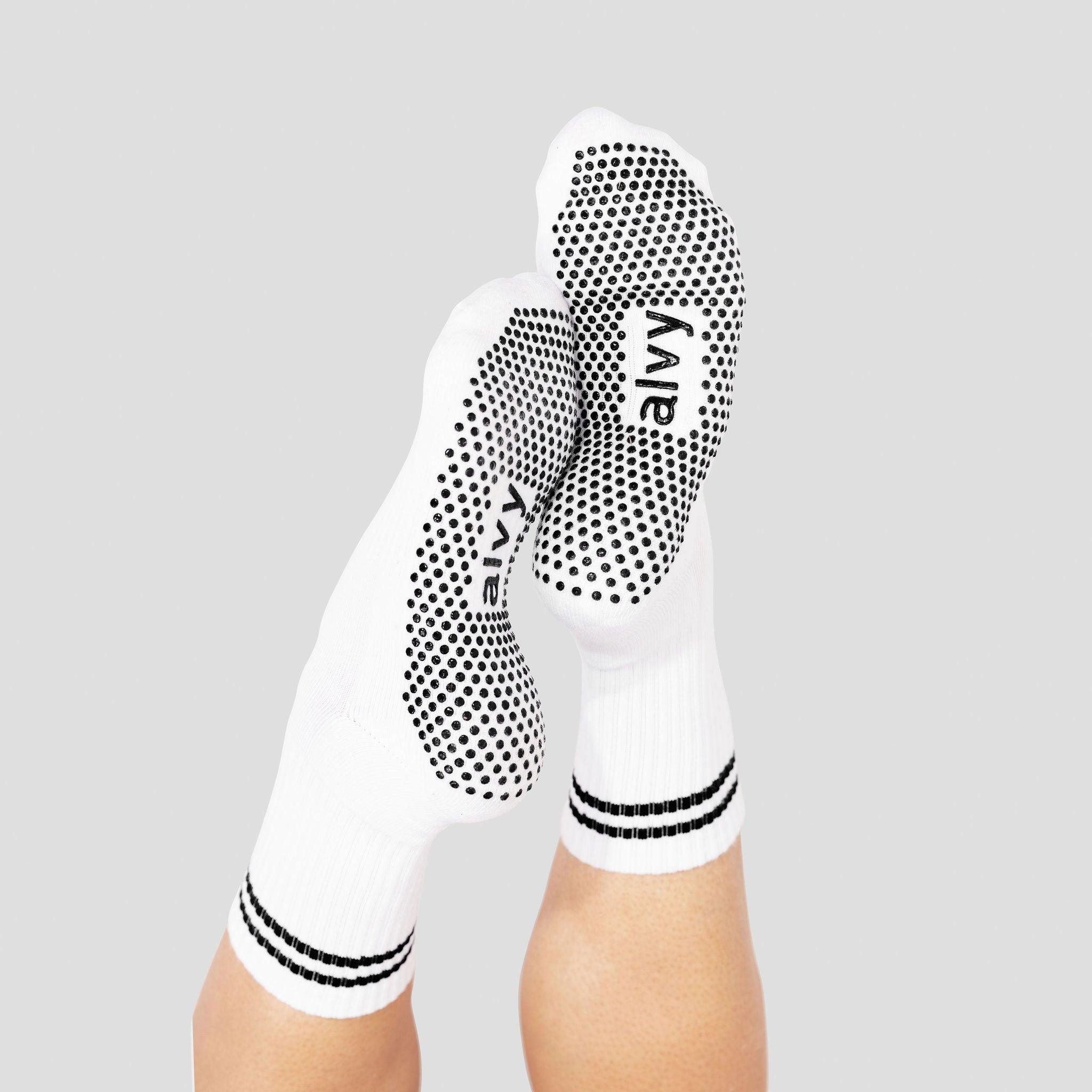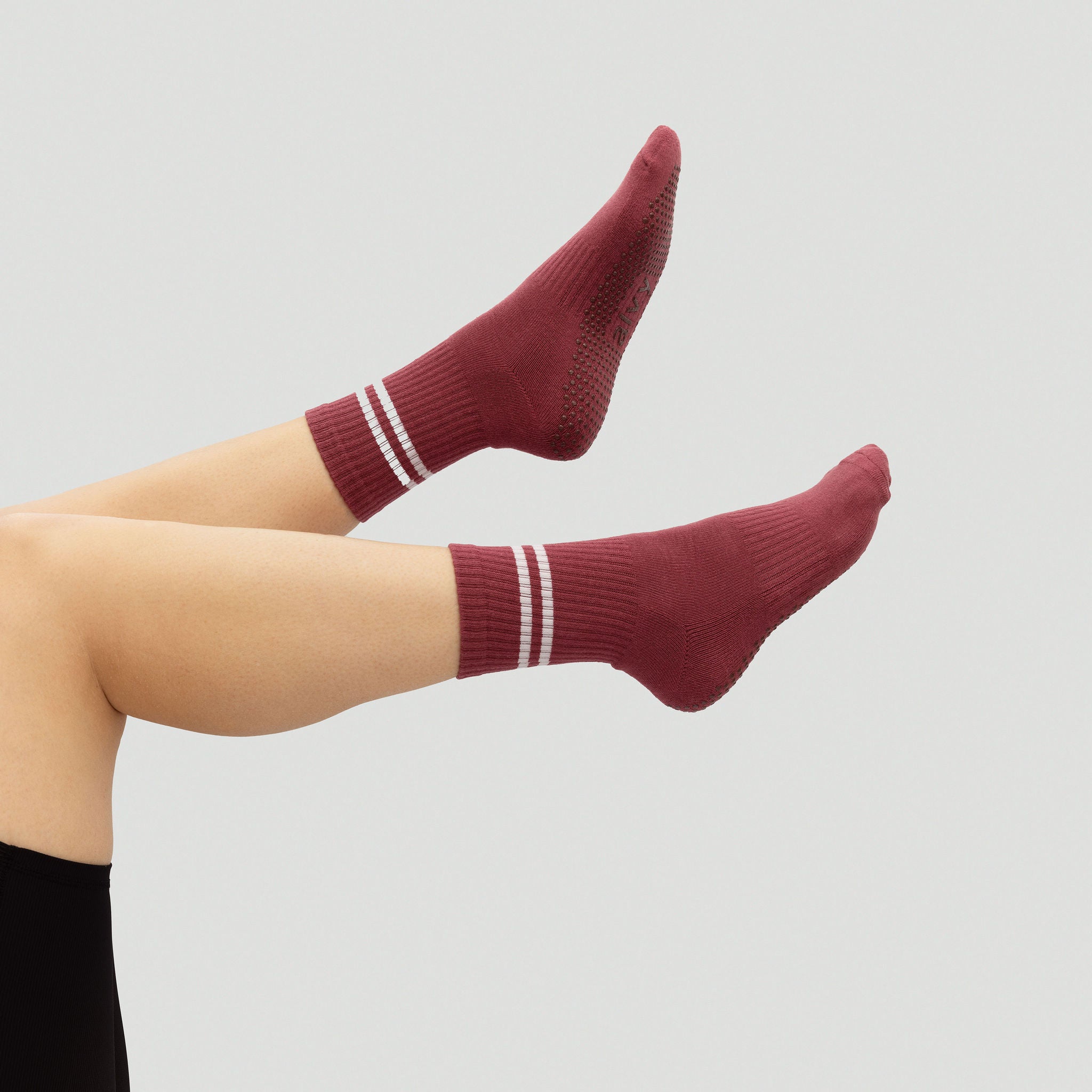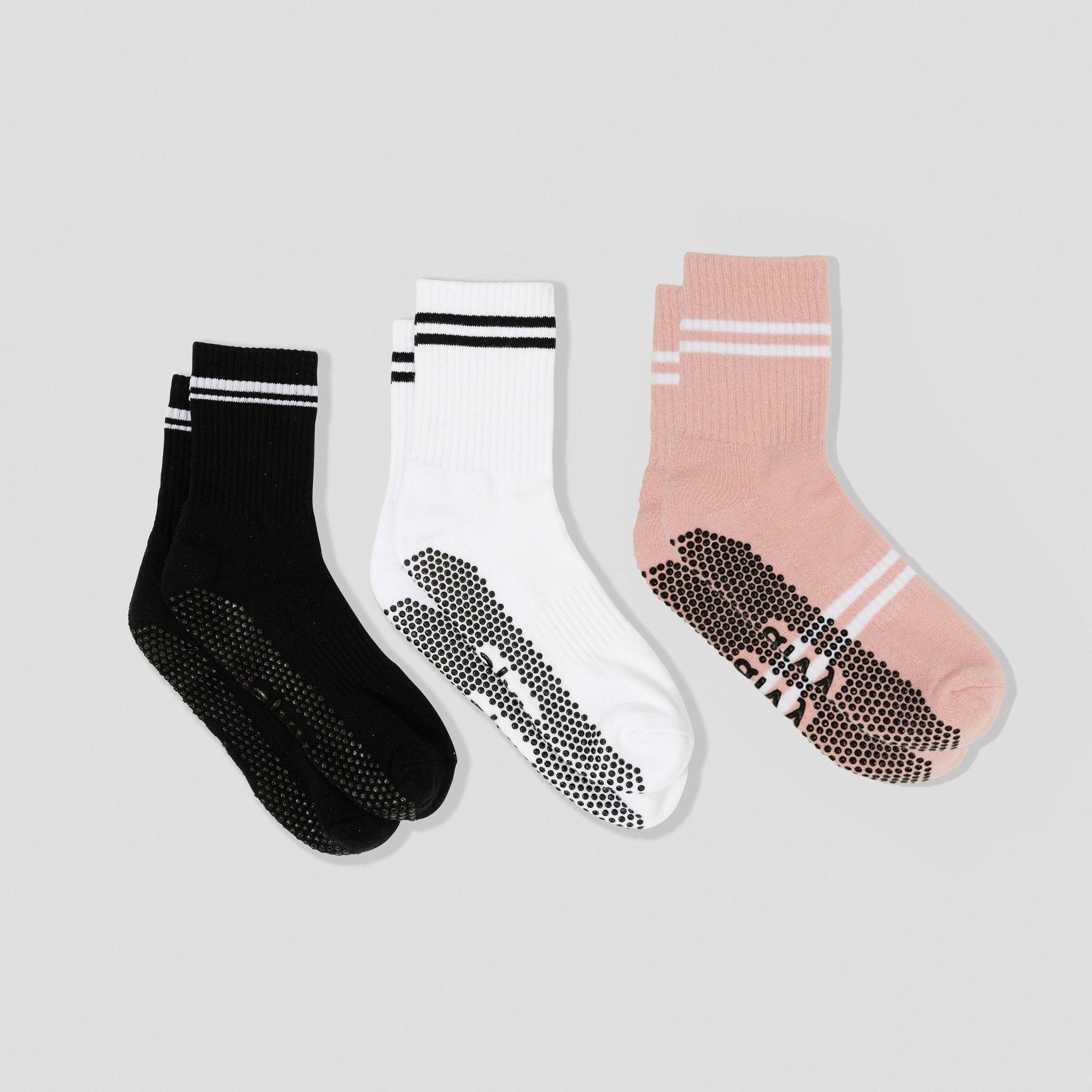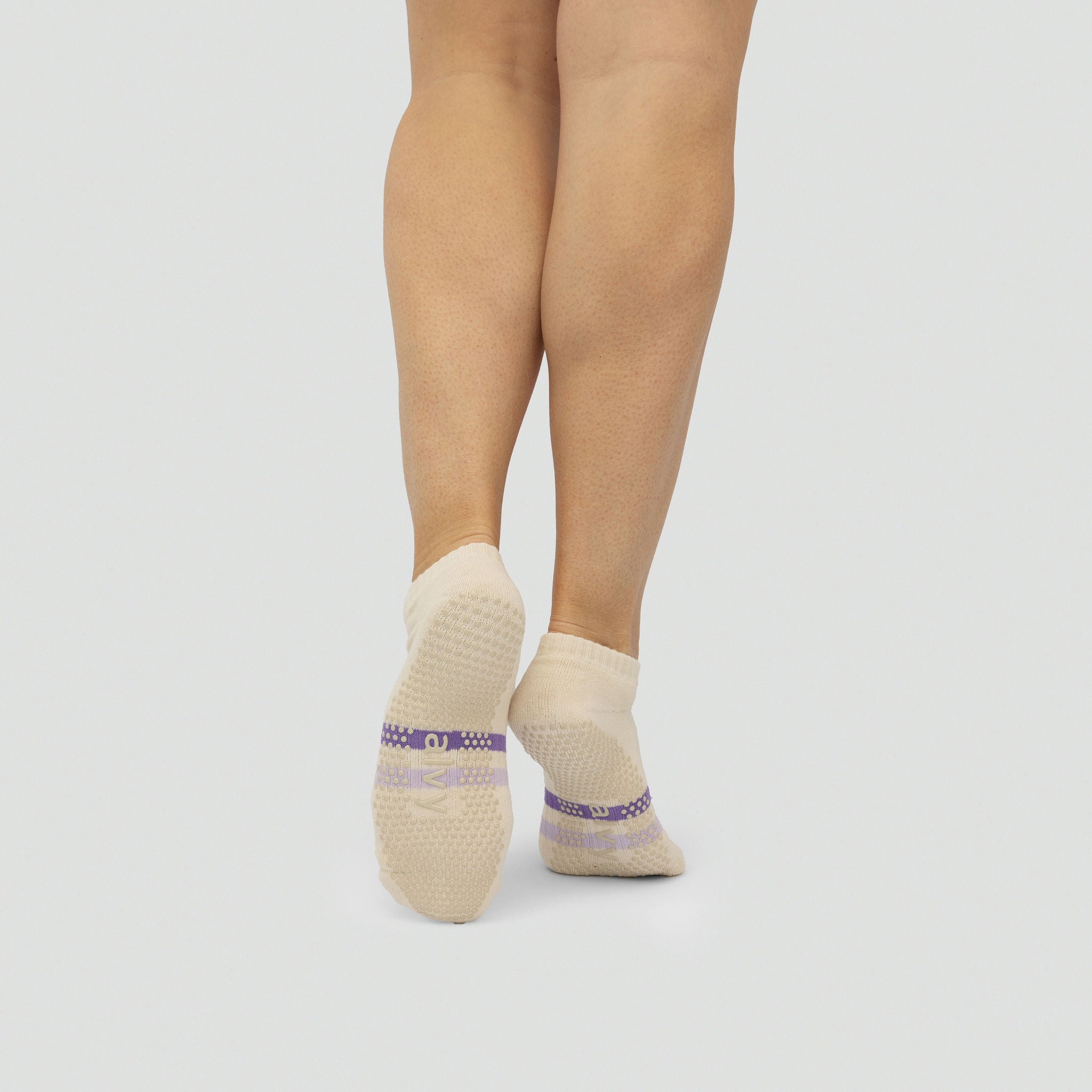Key Takeaways
- Pilates enhances core strength and promotes better posture.
- It's a low-impact exercise suitable for a broad range of people.
- Regular practice is essential for maximum benefits.
What's Pilates and What's Involved
Pilates is a form of low-impact exercise that aims to strengthen muscles while improving postural alignment and flexibility. It is a method of exercise and physical movement designed to stretch, strengthen, and balance the body. Pilates has a focus on mind-body connection and is often used as a tool for rehabilitation as well as a preventive measure.
When you practise Pilates, you'll engage in a range of exercises with the help of Pilates socks that are typically performed on a mat or using specialised equipment like the reformer machine. These exercises are designed to target the core, although they also work various other areas of your body.
Regular Pilates practice can offer various benefits, such as improved flexibility, muscle tone, and balance, as well as enhanced mental wellbeing. It's suitable for people of all ages and fitness levels, and exercises can be modified to meet your needs.
The Main Principles and Core Elements
Below are the foundational principles that inform every Pilates movement you perform.
- Centreing: This principle emphasises the use of your core — the 'powerhouse' of your body. All movements originate from the centre, involving your abdominals, lower back, hips, and buttocks.
- Concentration: Each exercise requires your full attention. You become acutely aware of your body's movements and alignment, leading to a deeper understanding of the exercise benefits.
- Control: Instead of relying on momentum, your movements in Pilates should be controlled. This helps build muscular endurance and strength.
- Precision: With an emphasis on doing one precise and perfect movement, rather than many half-hearted ones, the focus on precision means that every part of your body is engaged in Pilates.
- Breath: Proper breathing is crucial in Pilates, coordinating with each movement. Inhale deeply through the nose, and exhale through the mouth.
Pilates Is Becoming More Popular In Australia
Pilates has seen a significant surge in popularity across Australia, captivating enthusiasts with its comprehensive approach to fitness that caters to flexibility, muscle strength, and postural alignment. Here's a few reasons we can think of that can explain this trend particularly with women between 25 and 45 in particular.
- Improves Flexibility. Pilates practice is highly regarded for its ability to increase your overall flexibility. Through a series of controlled movements and stretches, you can experience enhanced range of motion in your joints, which contributes to the prevention of injuries and the improvement of physical performance.
- Increases Muscle Strength. Unlike some workouts that tend to overdevelop particular muscles, Pilates focuses on balanced muscle development. You will notice an increase in muscle strength, especially in your core muscles, which is fundamental for stabilising your body and providing support to your spine.
- Enhances Postural Alignment. Your posture benefits greatly from Pilates exercises because they teach body awareness and encourage proper alignment. With consistent practice, you can achieve a healthier posture, reduced lower back pain, and an overall sense of bodily harmony, a testament to its growing popularity.
Related: 20 facts about Pilates you didn't know.
Pilates Equipment and Accessories You Need
Before you embark on your Pilates journey, it's crucial to understand the fundamental equipment and accessories required to get started. Apart from a good set of Pilates workout clothes, there is a variety of apparatus that assist in enhancing your core strength, flexibility, and posture. Remember, there are two types of Pilates you can do which are mat or reformer Pilates.
The Reformer
The Reformer is arguably the most iconic piece of equipment for reformer Pilates. It's a bed-like frame with a flat platform on it, called the carriage, which rolls back and forth on wheels within the frame. The carriage is attached to one end of the reformer by a set of springs, which offer different levels of resistance, providing an effective and varied workout. The Reformer helps with alignment and is excellent for building core strength. If you're more of a do it at home person, then check out these top reformers in Australia to purchase.

Credit: Pilates Lab.
The Cadillac
Also known as the Trapeze Table, the Cadillac is a versatile piece of equipment that allows for a variety of exercises to be performed. It features a rectangular frame with a flat, cushioned surface, springs, bars, and straps that offer a wide range of workout routines. The Cadillac is specially designed for aiding rehabilitation and improving body strength.
Other Pilates Apparatus
- Wunda Chair: A small chair with a padded seat and spring-loaded pedal that can offer a challenging workout, particularly for the legs and core.
- Barrels: The Ladder Barrel, Spine Corrector, and Small Barrel are all part of this subcategory, designed to support flexion and extension of the spine.
- Magic Circle: A flexible ring that provides resistance and is used to help tone various muscle groups.
Each piece of apparatus targets specific muscle groups, allowing for a comprehensive, full-body Pilates workout. Remember, while equipment can enhance your practice, many Pilates exercises can also be performed on a mat using your bodyweight for resistance.
Before You Start, Here's Some Tips
Embarking on your Pilates journey is exciting, but to ensure a smooth experience, it's crucial to understand a few key aspects.
Choosing a Pilates Class
Researching to find the right Pilates class that suits your fitness level and goals is essential. Consider styles like mat classes for beginners or reformer classes for a more challenging workout. Look for certified instructors to guide you effectively and safely. Also, the cost of a single reformer Pilates class can range between $35 and $42 so compare pricing at different studios.
What to Expect in Your First Session
Your first session will introduce you to the basics of Pilates, including breathing techniques and core engagement. Expect to learn fundamental moves and how to use Pilates equipment if applicable. Wear comfortable, fitted clothing to allow your instructor to see your movements clearly and correct your form if necessary. Importantly, don't forget to grab one of our crew grip socks or ankle cut as you'll need them.
Common Pilates Myths Debunked
Don't be misled by common myths. For instance, Pilates is not just for flexibility; it also builds strength and can be truly challenging, regardless of your fitness level. Additionally, Pilates is suitable for both men and women, contrary to the notion that it's female-oriented.
Frequently Asked Questions
Can Pilates assist in weight management and how effective is it?
While Pilates on its own may not lead to significant weight loss, it can be a valuable component of a weight management program. The exercise increases lean muscle mass, which can help your body to burn calories more efficiently even when at rest.
What can beginners expect from their first Pilates class?
Beginners can expect to become acquainted with the basics of Pilates, which include breathing techniques, foundational movements, and the importance of alignment and core engagement. Classes often focus on building a solid base before progressing to more challenging exercises.
How frequently should a beginner participate in Pilates workouts?
For beginners, participating in Pilates workouts two to three times per week is advisable. This allows for muscle recovery while building strength and familiarity with the exercises. Here's a guide we've put together on how often you should do Pilates a week.
What equipment is essential for a Pilates mat workout?
The essential equipment for a Pilates mat workout includes a Pilates or yoga mat for cushioning and support. Some exercises may use additional props like resistance bands, Pilates balls or rings, but these are not necessary to get started.

